
A Tale of Two Cities is a 1935 film based upon Charles Dickens' 1859 historical novel, A Tale of Two Cities, set in London and Paris. The film stars Ronald Colman as Sydney Carton and Elizabeth Allan as Lucie Manette. The supporting players include Edna May Oliver, Reginald Owen, Basil Rathbone, Lucille La Verne, Blanche Yurka, Henry B. Walthall and Donald Woods. It was directed by Jack Conway from a screenplay by W. P. Lipscomb and S. N. Behrman. The film was nominated for the Academy Award for Best Picture and Best Film Editing.
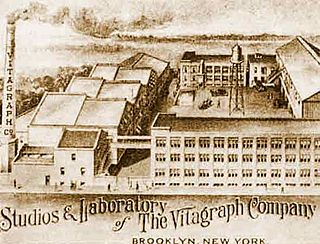
Vitagraph Studios, also known as the Vitagraph Company of America, was a United States motion picture studio. It was founded by J. Stuart Blackton and Albert E. Smith in 1897 in Brooklyn, New York, as the American Vitagraph Company. By 1907, it was the most prolific American film production company, producing many famous silent films. It was bought by Warner Bros. in 1925.

John Bunny was an American actor. Bunny began his career as a stage actor, but transitioned to a film career after joining Vitagraph Studios around 1910. At Vitagraph, Bunny made over 150 short films – many of them domestic comedies with the comedian Flora Finch – and became one of the most well-known actors of his era.

Norma Marie Talmadge was an American actress and film producer of the silent era. A major box-office draw for more than a decade, her career reached a peak in the early 1920s, when she ranked among the most popular idols of the American screen.
Doctor Alexandre Manette is a character in Charles Dickens' 1859 novel A Tale of Two Cities. He is Lucie's father, a brilliant physician, and spent eighteen years "in secret" as a prisoner in the Bastille prior to the French Revolution. He is imprisoned because in the course of his medical practice he learns of abusive actions by two members of the aristocratic Evrémonde family. While realizing the power at court of nobles such as the Evrémondes, Manette reports them to a minister of the royal government. He is seized from his young family and imprisoned under a lettre de cachet.

Sydney Carton is a central character in Charles Dickens' 1859 novel A Tale of Two Cities. He is a shrewd young Englishman educated at Shrewsbury School, and sometime junior to his fellow barrister Stryver. Carton is portrayed as a brilliant but depressed and cynical drunkard who is full of self-loathing because of what he sees as his wasted life. He feels a deep unrequited love for Lucie Manette, who nevertheless inspires him to try to be a better person. Near the end of the novel, Carton manages to change places with Lucie's husband, Charles Darnay, hours before Darnay's scheduled execution in France, giving his life for Lucie's sake. Later, Lucie and Charles name their second son after Carton.

A Tale of Two Cities is a historical novel published in 1859 by Charles Dickens, set in London and Paris before and during the French Revolution. The novel tells the story of the French Doctor Manette, his 18-year-long imprisonment in the Bastille in Paris, and his release to live in London with his daughter Lucie whom he had never met. The story is set against the conditions that led up to the French Revolution and the Reign of Terror.

The seamstress is a fictional character in Charles Dickens's 1859 novel A Tale of Two Cities.
Theodore Marston was an American silent film director and writer during the early silent period. He directed films including Aurora Floyd in 1912 and worked with actors such as William Garwood and Harry Benham. He became head of dramatic film production at the Kinemacolor Company of America in October 1913.
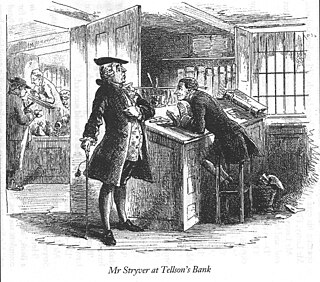
C.J. Stryver is a character in Charles Dickens's 1859 novel A Tale of Two Cities and in the television and film adaptations of the story. He is a barrister in London, with the character Sydney Carton working under him.

David Copperfield is a 1911 American silent short drama film based on the 1850 novel of the same name by Charles Dickens. It is the oldest known film adaptation of the novel.
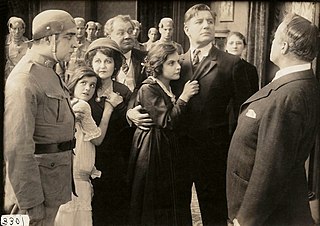
The Battle Cry of Peace is a 1915 American silent war film directed by Wilfrid North and J. Stuart Blackton, one of the founders of Vitagraph Company of America who also wrote the scenario. The film is based on the book Defenseless America, by Hudson Maxim, and was distributed by V-L-S-E, Incorporated. The film stars Charles Richman, L. Rogers Lytton, and James W. Morrison.
A Tale of Two Cities is a 1922 British silent drama film directed by Walter Courtney Rowden and starring Clive Brook, Ann Trevor and J. Fisher White. The film is an adaptation of the 1859 novel A Tale of Two Cities by Charles Dickens, and its plot concerns events taking place during the French Revolution. It was made as part of the "Tense Moments with Great Authors Series" of films.

Albert Edward Smith was an English stage magician, film director and producer, and a naturalized American. He founded Vitagraph Studios with his business partner James Stuart Blackton in 1897.
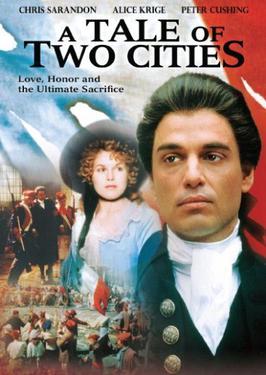
A Tale of Two Cities is a 1980 American historical drama film made for TV, directed by Jim Goddard and starring Chris Sarandon, who plays dual roles as two characters who are in love with the same woman. It is based on the 1859 Charles Dickens novel of the same name set in the French Revolution.

A Tale of Two Cities is a 1917 American silent historical drama film directed by Frank Lloyd and starring William Farnum, Jewel Carmen, and Charles Clary. The film is based on Charles Dickens' 1859 novel of the same name, which has been filmed a number of times.
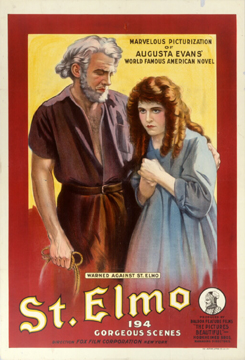
St. Elmo is a 1914 American silent drama film produced by the Balboa Amusement Producing Company and distributed by William Fox's Box Office Attractions Company. It was the first feature-length film adaptation of Augusta Jane Evans's 1866 novel of the same name. The story follows the life of the title character, who kills his cousin over the love of Agnes, falls from grace, and eventually finds redemption and love with Edna. It is disputed who directed the film; many sources credit Bertram Bracken, while others list St. Elmo as J. Gordon Edwards's directorial debut.

The Pickwick Papers is a 1913 three-reel silent film based on the 1837 novel of the same name by Charles Dickens. The film was produced by Vitagraph Studios and features John Bunny in the title role of Samuel Pickwick.
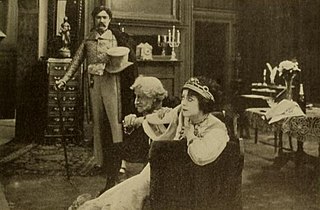
Vanity Fair is a 1911 silent film adaptation of William Makepeace Thackeray's 1848 novel of the same name. It was one of Vitagraph's first three reel productions, along with A Tale of Two Cities (1911).

A Night in New Arabia is a lost 1917 four-reel silent film, directed by Thomas Mills. It is based on the short story "A Night in New Arabia" from Strictly Business, a collection of 23 short stories by O. Henry published in 1910. The movie critic for the Moving Picture World, Margaret I. MacDonald, says that it "...is one of the best of the O. Henry four-part features".
















